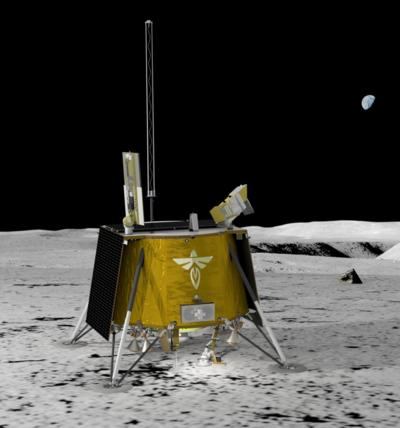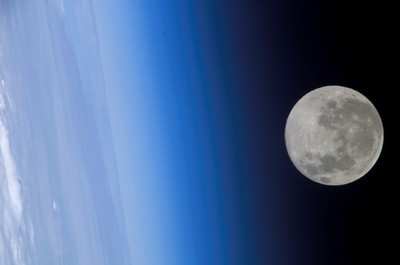Will Deliver A Suite Of Ten NASA-Sponsored Demonstration Payloads To Mare Crisium
Firefly Aerospace has received an award from NASA for $93.3 million to deliver a suite of ten NASA-sponsored science and technology demonstration payloads to Mare Crisium in the Moon’s Crisium basin. Firefly’s ‘Blue Ghost’ lunar lander will deliver the payloads to the lunar surface in 2023 in fulfillment of Commercial Lunar Payload Services (CLPS) task order 19D, managed by NASA’s Science Mission Directorate.

“Firefly and its teammates are honored to be selected by NASA to deliver these important payloads to the lunar surface, paving the way for human and robotic exploration missions to follow. The CLPS 19D mission represents the third pillar in Firefly’s plan to become America’s premier end-to-end space transportation company. With our Alpha launch vehicle providing launch services, and our Space Utility Vehicle (SUV) providing in-space mobility, Firefly is poised to ensure U.S. preeminence in the commercialization of cislunar space,” said Firefly founder and CEO Dr. Tom Markusic. “The Firefly team of 330 aerospace professionals leverages over $100M in specialized engineering, production, and test facilities to establish itself as a leader in the nation’s space industrial base.”
“This award is further validation of Firefly, its team and its mission to become a versatile provider of a broad range of space-related services,’’ said Dr. Max Polyakov, founder of Noosphere Ventures, the largest investor in Firefly. “It’s extremely gratifying to know that NASA recognizes the tremendous talent we’ve assembled at Firefly. Our recently appointed board members bring the highest level of U.S. Government expertise and provide strategic guidance to further strengthen the company as we move into this next phase of accelerated growth. It’s an exciting time.’’
Blue Ghost (named after the rare Phausis reticulata firefly) will operate on-board payloads through lunar transit, during lunar orbit, and on the lunar surface for a complete lunar day (about 14 Earth days) and well into the freezing dark of lunar night. In addition to the NASA-sponsored payloads, the lander will carry more than 50 kg of commercial payloads. Some of this commercial capacity remains available.
“Our team’s collective experience resulted in a creative technical solution to meet the needs of all these payloads, with a strong emphasis on both lunar science return and customer service through each mission phase,” said Dr. Will Coogan, Lander Chief Engineer. “Firefly’s expertise in rapidly developing and operating efficient space systems combined with expertise from Redwire in development and operations of deep space systems, Advanced Solutions (ASI) in GN&C and spacecraft software, and SpaceWorks Inc. in spacecraft systems engineering makes for an extremely capable lander team.”

Mare Crisium has been the subject of previous lunar missions including the Soviet landers Luna 15, Luna 23, and Luna 24. In 2012, the NASA GRAIL mission confirmed and mapped a mass-concentration at the center of the basin. This lunar surface mission will explore this region’s regolith properties, geophysical characteristics, and the interaction between solar wind and Earth’s magnetic field.
Firefly is developing, qualifying, and manufacturing Blue Ghost at its spacecraft integration facilities in Cedar Park, TX, about 30 minutes north of Austin. Lander Program Manager Shea Ferring stated, “We are utilizing our Austin-based AS9100-certified engineering, test, and production facilities to build and operate world-class spacecraft. NASA’s support for our lunar program allows us to increase our capabilities for in-space services to the benefit of both U.S. government and commercial customers.
 Airborne 10.14.25: Laser Threat, VeriJet BK, Duffy Threatens Problem Controllers
Airborne 10.14.25: Laser Threat, VeriJet BK, Duffy Threatens Problem Controllers Airborne 10.15.25: Phantom 3500 Confounds, Citation CJ3 Gen2 TC, True Blue Power
Airborne 10.15.25: Phantom 3500 Confounds, Citation CJ3 Gen2 TC, True Blue Power Aero-News: Quote of the Day (10.17.25)
Aero-News: Quote of the Day (10.17.25) NTSB Prelim: Piper PA-28-180
NTSB Prelim: Piper PA-28-180 ANN FAQ: Contributing To Aero-TV
ANN FAQ: Contributing To Aero-TV




